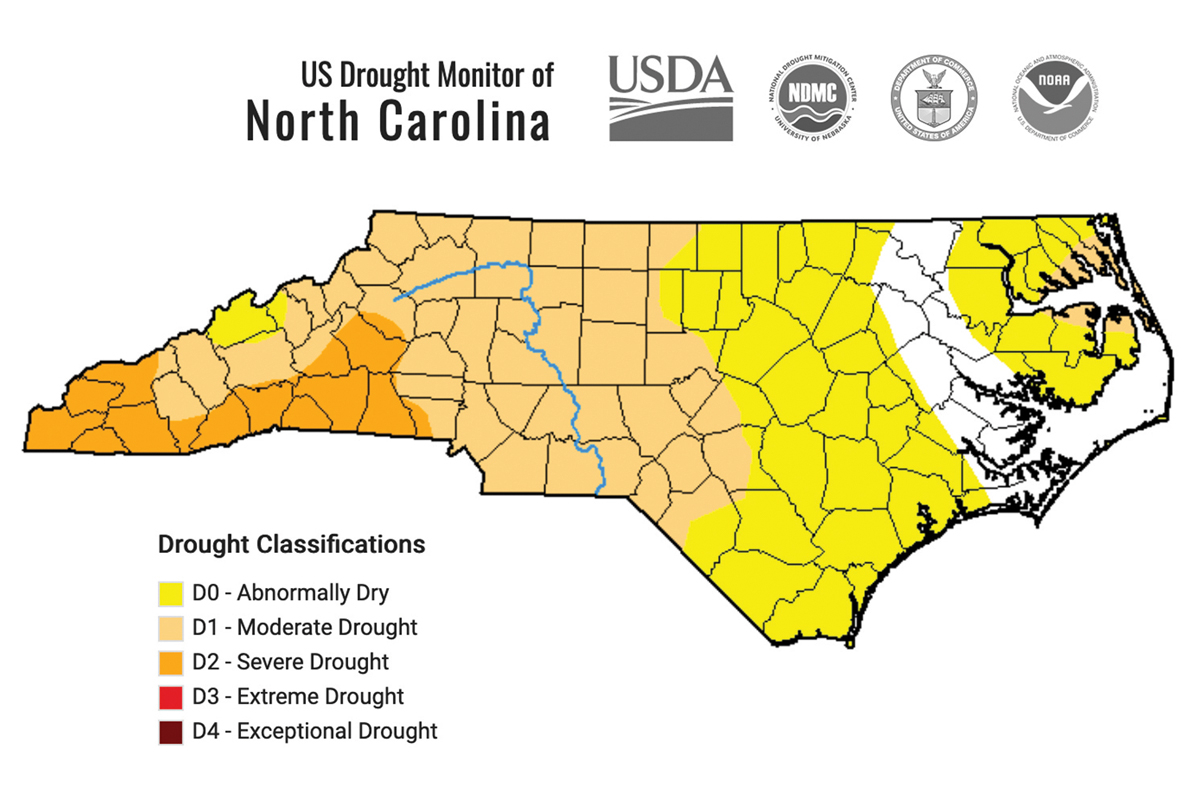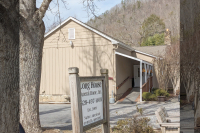Burn ban issued amid ongoing drought
 New drought maps are released every Thursday at ncdrought.org. N.C. Drought Management Advisory Council map
New drought maps are released every Thursday at ncdrought.org. N.C. Drought Management Advisory Council map
A burn ban has been issued for 14 Western North Carolina counties in the face of expanding drought following the state’s 10th-driest October since records began in 1895.
According to the most recent drought map from the N.C. Drought Management Advisory Council, based on data collected as of Oct. 31, 14 counties are in severe drought, 47 are in moderate drought and 33 are abnormally dry. The driest conditions occur in the far western region.
The burn ban, which the N.C. Forest Service issued Sunday, Nov. 5, includes all 14 counties under the severe drought designation: Jackson, Macon, Swain, Clay, Graham, Cherokee, Transylvania, Henderson, Burke, Cleveland, Gaston, McDowell, Polk and Rutherford.
The ban prohibits all open burning in these counties more than 100 feet from a residence, regardless of whether a permit was previously issued. Violations will result in a $100 fine plus $183 in court fees.
Some counties, including Jackson, Macon, Cherokee and Henderson, have instituted local burn bans applying to fires close than 100 feet. The Great Smoky Mountains National Park accounced a ban on backcountry campfires.
Any person who sets an illegal fire may be liable for expenses related to extinguishing it. In counties not covered by the burn ban, people should still exercise “extreme caution” when burning, said Agriculture Commissioner Steve Troxler. Much of the state remains dry, and the Forest Service will assess the need to expand the burn ban over the coming weeks.
Related Items
“Because dry conditions are expected to continue this burn ban is necessary to reduce the risk of fires starting and spreading quickly,” Troxler said. “Our top priority is always to protect lives, property and forestland across the state.”
Many sites in the state received less than an inch of rain throughout October – Asheville, for instance, measured only 0.7 inches, about one-fifth its normal 3.37 inches. Cullowhee’s 1.03 inches was about one-third its normal 3.22 inches, and on the plateau Highlands was even drier, its 1.15 inches just a fraction of its normal 6.47 inches. Dry conditions have continued into November, with multiple wildfires now burning.
“This is one of the top five driest September and October periods on record for much of Western North Carolina,” said Corey Davis, assistant state climatologist with the N.C. State Climate Office.
However, because the region is entering in an El Niño weather pattern this winter, sustained wetter weather is likely in the future.
Temperature-wise, October was a largely seasonal month, with the statewide average temperature of 60.4 degrees equaling the recent 30-year average and making this the 54th-warmest October out of the past 129 years, according to the N.C. State Climate Office.
— Holly Kays, Outdoors Editor









